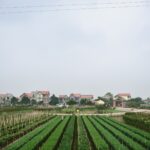Understanding the Surge of Gated Communities in Suburban America: Trends, Impacts, and Access


Photo by Random Institute on Unsplash
Introduction: The Emergence of Gated Communities in Suburbia
In recent decades, gated communities have become a prominent feature of suburban landscapes across the United States. Once considered exclusive to affluent enclaves, these residential developments have proliferated, now encompassing a diverse array of suburban neighborhoods. The rise of gated communities reflects a complex interplay of economic, social, and security factors. This article examines the underlying trends, explores their impact, and offers detailed guidance for those interested in accessing these communities.
Understanding Gated Communities: Defining Features and Historical Context
Gated communities are residential developments characterized by controlled access points, physical barriers such as walls or gates, and private governance structures -typically managed by homeowners’ associations (HOAs) or property owners’ associations (POAs). These communities often offer shared amenities, such as parks, pools, or golf courses, and are governed by rules designed to maintain standards and exclusivity [1] . Historically, enclosed neighborhoods have existed for centuries, but the modern wave of gated suburban developments gained momentum in the late 20th century. Economic restructuring, increased urban crime rates, and shifting political ideologies during the 1970s and 1980s contributed to this resurgence [3] .
Key Drivers Behind the Growth of Gated Communities
The expansion of gated communities in suburban America is driven by several intertwined factors:
1. Security and Perceived Safety
One of the most frequently cited motivations for moving to a gated community is the desire for enhanced security. Residents often express concerns about urban crime, vandalism, and property theft. Gated communities provide a tangible sense of protection through restricted access, security patrols, and surveillance systems. Studies indicate that many homeowners, particularly those relocating from urban centers, are drawn to these communities by the promise of a safer environment for their families [2] .
2. Social Homogeneity and Community Identity
Gated developments commonly foster social and economic homogeneity . The governance structure and selection processes can lead to residents who share similar backgrounds, values, and lifestyles. This can create strong feelings of neighborhood identity, but often at the cost of increased residential segregation by race, class, and age [1] . While some residents appreciate the sense of belonging, critics argue that such homogeneity can reinforce social divides.
3. Amenities and Lifestyle
Modern gated communities frequently offer an array of amenities such as fitness centers, clubhouses, community events, and well-maintained green spaces. The promise of a resort-like lifestyle, combined with strict property maintenance standards, appeals to households seeking convenience and prestige [4] .
4. Economic and Political Shifts
Economic changes in the late 20th century-including the rise of neoliberal policies, reduced public spending, and increasing privatization-opened the door for private developments to fill perceived gaps in public safety and infrastructure. Developers capitalized on these trends, marketing gated communities as a premium alternative to traditional suburban neighborhoods [3] .
Impacts on Suburban Life and Urban Development
The growth of gated communities has significant implications for suburban and urban areas:
1. Segregation and Social Distance
Research has shown that gated communities tend to increase levels of residential segregation . By creating enclaves of racial, economic, and age homogeneity, these developments can exacerbate existing inequalities, leading to geographic discontinuities within metropolitan regions [1] . This can impact access to public resources, schools, and social networks for those outside the gates.
2. Private vs. Public Governance
Gated communities typically operate under private governance, with residents responsible for infrastructure, security, and rule enforcement. While this can result in higher standards of maintenance and responsiveness, it may also limit access for non-residents and reduce the sense of shared civic responsibility [4] .
3. Changes in Urban Form
The prevalence of gated developments has contributed to suburban sprawl and the fragmentation of urban space. This trend raises questions about the sustainability and inclusiveness of future suburban growth [2] .
Evaluating Gated Communities: Benefits and Challenges
Homebuyers and renters considering gated communities should weigh the following benefits and challenges:
Benefits:
- Enhanced security and privacy
- Access to shared amenities and recreational facilities
- Strict property maintenance and aesthetic standards
- Potential for higher property values relative to non-gated neighborhoods
Challenges:
- Homeowners’ association (HOA) fees, which may be substantial
- Strict rules and regulations that may limit personal freedom
- Social homogeneity may limit diversity and inclusion
- Potential for isolation from broader community resources and networks
It is important to thoroughly review HOA documents, understand community rules, and assess whether the amenities and governance align with your household’s needs and values. Visiting multiple developments and speaking with current residents can provide valuable perspectives.
How to Explore or Access Gated Communities
If you are interested in moving to a gated community, consider the following steps:
1. Research Local Developments
Begin by searching for gated communities in your target suburban area. You can use real estate platforms such as Realtor.com, Zillow.com, or Redfin.com to filter listings by community features. Local real estate agents specializing in suburban developments can also assist in identifying suitable options.
2. Schedule Visits and Tours
Contact the property management office or sales center of the community to arrange visits. Many communities host open houses or offer private tours. During your visit, ask about security measures, amenities, HOA fees, and community policies.
3. Review Governing Documents
Request copies of the HOA or POA bylaws, covenants, and fee schedules. Pay close attention to rules that may affect your lifestyle, such as landscaping requirements, pet policies, or restrictions on rentals.
4. Consider Financial Implications
In addition to the purchase price or rent, factor in HOA dues and any special assessments. These fees fund the community’s amenities and maintenance but can vary widely based on services provided.

Photo by dodohawe show on Unsplash
5. Evaluate Community Fit
Think about whether the community’s culture, demographic makeup, and amenities match your household’s needs. If diversity and access to public resources are priorities, you may wish to consider alternatives or seek out communities with more open policies.
If you are unable to find information online, contacting local real estate agents or visiting the official website of your city or county’s planning department can provide additional guidance. You may also consult the U.S. Department of Housing and Urban Development (HUD) for resources on fair housing and community development. To ensure compliance with local regulations and to protect your rights, always verify information through official sources or licensed professionals.
Alternatives to Gated Communities
For those seeking enhanced security or amenities but concerned about the exclusivity or costs of gated communities, consider these alternatives:
- Neighborhood watch programs and local safety initiatives
- Non-gated planned developments with strong HOA governance
- Communities with open-access amenities and inclusive policies
Public agencies and local government websites often provide resources for evaluating neighborhood safety and community features. Searching for official city or county crime statistics and community reviews can support informed decisions.
Key Takeaways
The rise of gated communities in suburban America reflects broader trends in security, lifestyle preferences, and urban development. While these communities offer tangible benefits, they also present significant challenges related to segregation, inclusivity, and governance. Prospective residents should carefully evaluate their options, seek verified information, and consider both the benefits and potential drawbacks. When in doubt, consult local real estate professionals or official agencies for personalized guidance.
References
- [1] PMC (2020). Inequality shaping processes and gated communities in US western metropolitan areas.
- [2] Low, S. (2001). Gated Communities and the Discourse of Urban Fear.
- [3] Grant, J. (2005). Challenging the public realm: gated communities in history.
- [4] PMC (2020). Gated Communities in the United States: From Case Studies to Urban Models.






